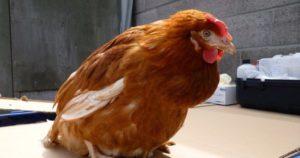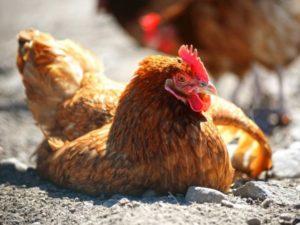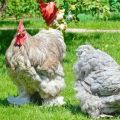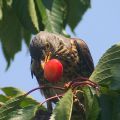Causes and symptoms of the appearance of chicken feather mites, how to get rid
Chicken feather mite causes a lot of discomfort in birds. It has many varieties and shapes. Each of them has its own characteristics. For birds, they all pose a danger, harm to health, impaired egg production, weight gain. To control pests, you need to recognize the symptoms and take some action.
Types of chicken mites
The feather mite has many varieties. Every farmer should know what the parasite looks like and carry out preventive examinations. If a disease is detected, treatment is immediately prescribed.
Microscopic mites
Micro mites cannot be seen without a microscope. However, their habitat on the body of a chicken has visual manifestations. Since the parasites feed on particles of the epithelium and secreted chicken secretions, bald spots are visible on the body. The bird is partially balding. Her condition worsens, egg production decreases, feather quality deteriorates. Micro mites are especially dangerous for juveniles and chickens. They differ by location:
- cytodites - affects the respiratory tract and lungs;
- Knemidokoptes - cause scabies throughout the body;
- epilermoptes - feeds on epithelial particles and causes itching.
Constant discomfort causes stress in birds. This is reflected in egg production and weight gain. Infection with a microscopic mite is fraught with complications:
- breathing problems;
- baldness;
- nodular inflammatory processes;
- loss of appetite;
- severe stress;
- behavioral disturbances.
Important! Sometimes the disease appears as a change in behavior, prevention and regular check-ups are recommended for protection.
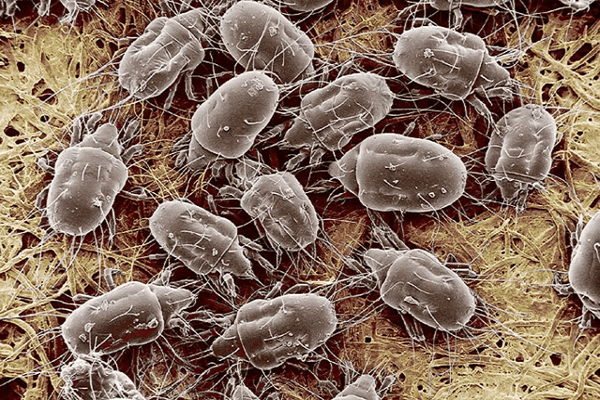
Medium pliers
Medium-sized ticks are much easier to recognize. They are divided into red, Persian and Ixodic. They are easy to spot on the head of the bird. Insects use chickens as a food source. They bite them only at night, as they are afraid of sunlight.
Pests can often be found in indoor chicken coops. Sometimes infection occurs in agricultural production. The industry closely monitors preventive measures, since it is not profitable for them to lose egg-laying chickens. The more they get sick, the lower their performance.
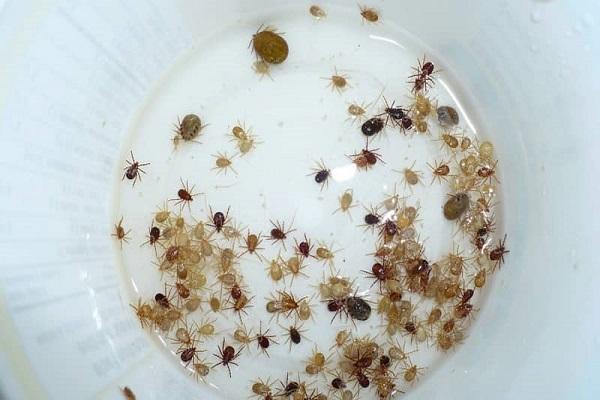
Red tick
They inhabit litter, poultry houses, perches, straw and cages. Ticks have an orange-yellow color, an elongated body, 6 legs. The entire body is covered with characteristic villi.
Ticks only turn red when they are sucked in blood. They bite at night.Bite sites can be seen on the nape and scallops of birds.
It is difficult to get rid of insects, since they are able to exist without food for about 6 months.
Females lay 20-22 eggs at a time. New individuals emerge from them. Pests do not die from severe frosts, but simply enter a state of dormancy. Most often, red mites breed in wet and dirty chicken coops.
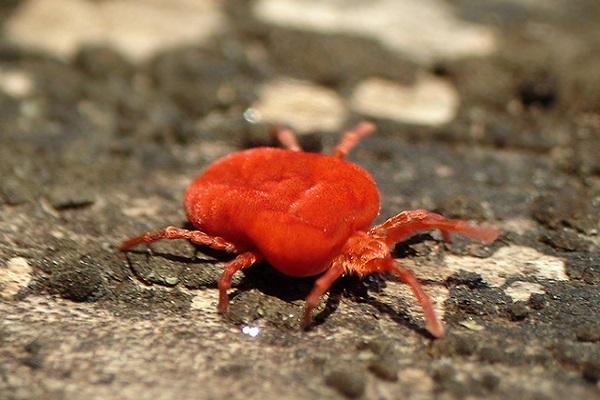
Persian tick
This type of mite is common in warmer regions. It affects poultry houses, rarely penetrates industrial areas. It is one of the most dangerous species, as it carries diseases dangerous to the health of chickens:
- salmonellosis;
- tuberculosis;
- pasteurellosis.
The tick drinks the chicken's blood, then regurgitates some of the digested food, toxins, and disease-causing bacteria back into the blood. After that, the individual becomes infected. All these diseases can lead to the death of birds.
Salmonella causes a severe infectious disease in humans. It can be contracted from birds and their eggs.
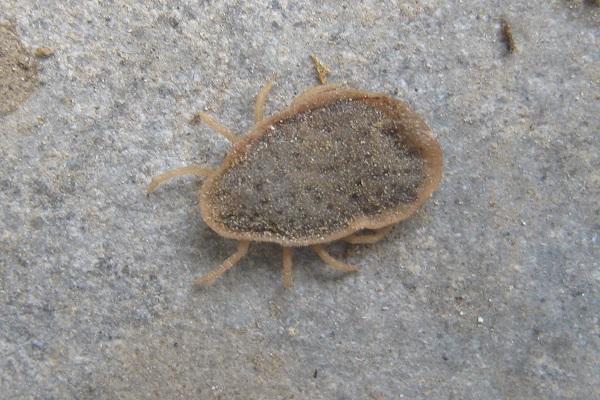
Ixodid tick
They penetrate the body of the chicken while walking. They do not pose any danger to birds. However, they are carriers of diseases for humans: Lyme Borelliosis and tick-borne encephalitis. They also bite people and pets.
They are rarely found in large numbers. Ticks bite birds, get food and crawl back into the grass to search for a new victim.
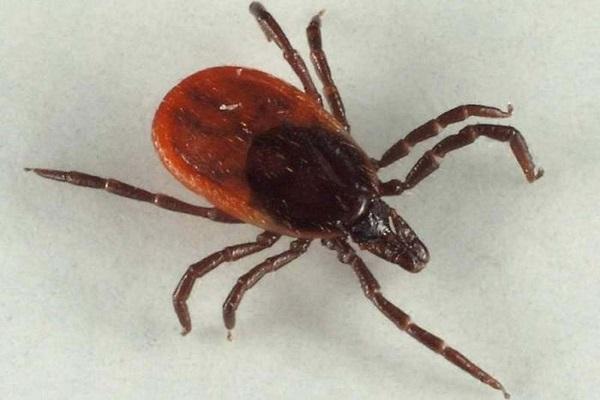
Reason for appearance
No matter how much you want to create the safest living conditions for your birds, this will not always work. Insects enter the house for several reasons:
- penetration of rodents and wild birds into the chicken coop;
- replacement of new livestock already infected with ticks;
- due to poor ventilation in the room;
- high humidity in the chicken coop, stagnant water;
- if the number of chickens is too large for the chicken coop;
- in the absence of a sand bath for birds;
- a person can bring ticks on clothes or shoes from the street.
To prevent disease in chickens, it is recommended to regularly inspect small crevices, livestock, litter in the house. They often hide there. Checks are done in the evening. To do this, a flashlight with a bright light is directed to the place to be checked. If pests are present, they will start scattering in different directions. Then they begin to carry out chemical and sanitary treatment of the premises. At this time, it is better to evict the chickens from the chicken coop.

The main symptoms
Tick infestation is accompanied by a number of symptoms. Only by observing the behavior and condition of chickens well, it is possible to determine what they are sick with. They show the following signs:
- baldness;
- the chicken tries to pull out its feathers with its beak;
- birds are afraid to enter the chicken coop in the evenings;
- bites are noticeable on the body;
- chickens are restless;
- refuse to gnaw in a familiar place;
- loss of appetite occurs;
- egg production decreases;
- birds do not gain weight or lose weight at all.
Not all symptoms are always pronounced. Therefore, it is recommended to monitor the condition of chickens, check the body for bites, monitor the weight and condition of the feathers.
Important! When infected with ticks, the chicken changes its behavior almost immediately..
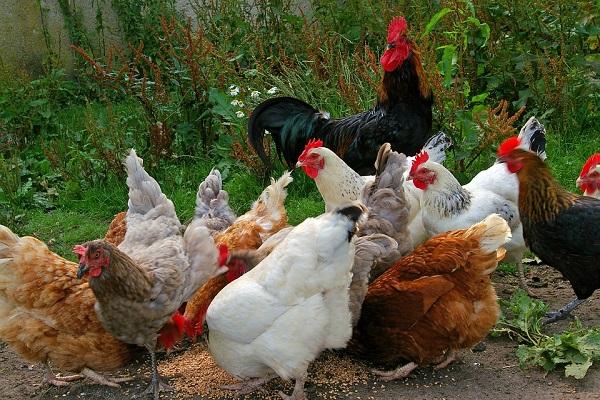
Parasite diagnostics
You can diagnose ticks visually by examining the places where insects live:
- Ticks that live in feather holes. Most often located under the wings on the neck, in the area of the eyes and beak. When damaged, the chicken sharply loses weight, and egg production decreases. Bald spots are also observed on the body.
- A microscopic mite is almost impossible to notice. It is localized throughout the body. Manifestations can be noticed after 2-3 months, when bumps appear on the paws, and the fingers are deformed. Prior to this, the bird behaves restlessly, as it experiences constant itching and discomfort.
- Red tick. More often than others, it affects the body of the chicken. It can be seen looking through feathers, it will run over the skin. The check is done in the evening.There will also be bite wounds on the skin.
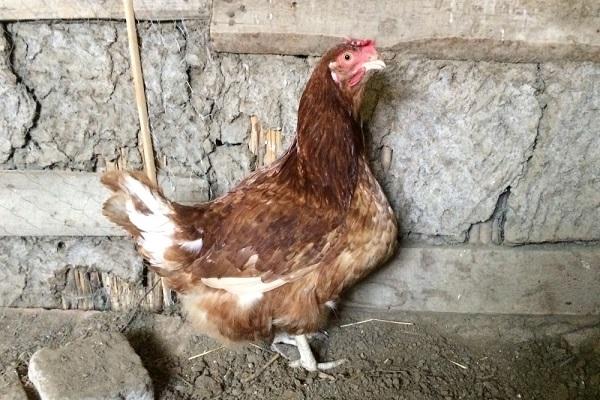
How to get rid of chicken mites
You can destroy harmful insects using chemical and folk remedies. Each farmer decides for himself what to use. Chemicals are much more effective than natural ones.
Chemicals
Before starting the use of chemicals, the chicken is examined for wounds. If they are, then they are lubricated with any healing agent. Of the traditional medicines used:
- Iretrium is a powder consisting of crushed chamomile flowers. They are sprinkled with the body of a chicken at the rate of 15 g per 1 kg of an individual.
- “Sevin” is also used as “Iretrium”.
- Aerosol "Ekoflis" - insecticide, destroys insects in 2-3 days.
- The drug "Ivermerk" is used according to the instructions, a therapeutic and prophylactic agent.
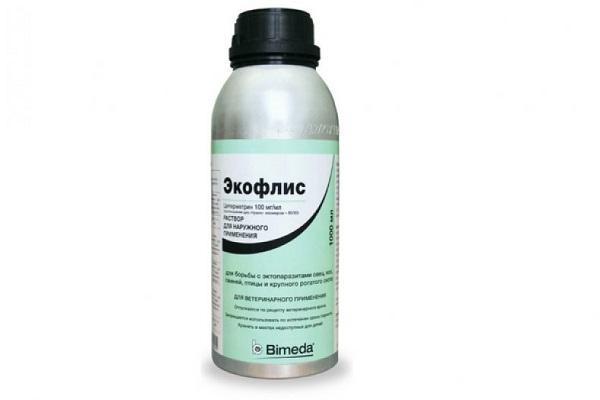
Folk remedies
Many farmers believe that the use of chemicals in the fight against diseases is harmful to the health of birds and affects the quality of eggs, therefore they prefer to use folk remedies.
Wood ash and sand
Wood ash and sand are mixed in equal proportions. Leave it in the chicken coop, the birds themselves take such baths. Wood ash kills mites.
Plants
Strongly smelling plants are hung in bunches in the hen house, they scare off pests. Suitable for this:
- sagebrush;
- mustard;
- mint;
- parsley;
- garlic;
- onion.

Why is the parasite dangerous for chickens?
If not treated, then gradually the chicken will be completely depleted. Her psychological health will be impaired. The constant itching causes stress in the bird Egg production and weight gain are sharply reduced. Feathers deteriorate in condition, the chicken becomes bald.
If you do not deal with the treatment of birds, then this will lead to their death from exhaustion.
Dangers and methods of protecting people
Not all ticks are dangerous to humans. Ixodid ticks are carriers of Lyme Borelliosis and tick-borne encephalitis. For pests to enter human blood, direct contact through the blood is needed. If there is a population of ticks in the chicken coop, then it must be destroyed with the help of insecticides.
Also, Persian ticks carry salmonellosis. It causes disease in birds. If you don't notice the symptoms right away and eat meat or eggs from an infected bird, then a serious infectious disease will develop in the human body. To prevent this, you need to carefully heat the meat and eggs of chickens.
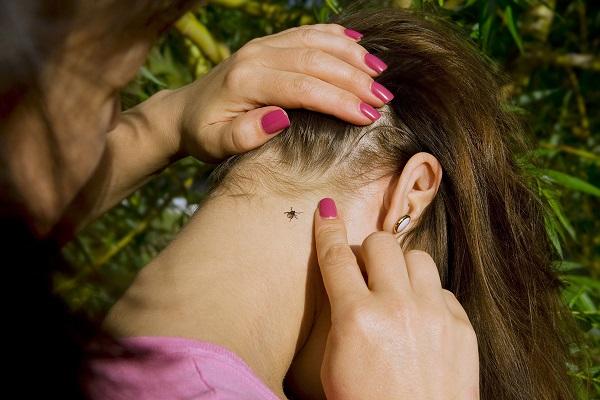
Prevention measures
To prevent infection with ticks in chicken coops, certain manipulations are carried out:
- monitor ventilation in the room;
- carry out preventive examinations and treatments;
- the grown chickens are weighed daily for meat;
- monitor the behavior of birds;
- monitor laying hens' egg production;
- monitor the cleanliness and order in the poultry house.
Ticks can seriously damage the health of chickens. Birds are susceptible to their infection, react to the disease with a decrease in productivity. This is very reflected in the industry. The behavior of individuals changes, they experience itching and discomfort. They constantly try to get rid of it by pulling out their feathers.
